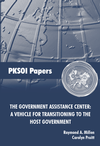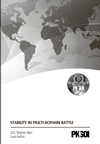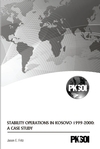The Government Assistance Center: A Vehicle for Transitioning to the Host Government

This monograph The Government Assistance Center: A Vehicle for Transitioning to the Host Government proposes the establishment of a new unifying assistance and development organization to help fragile states and is divided into five sections. The first section briefly examines the challenges associated with Whole of Government and Comprehensive approaches as well as with provincial reconstruction teams.















